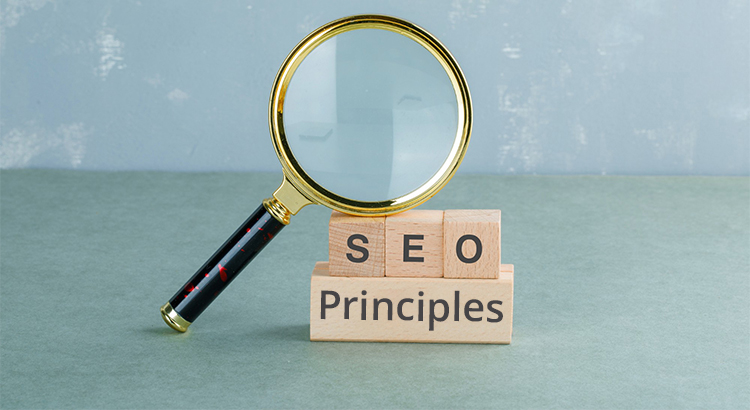Understanding the best SEO principles is essential for building a strong online presence and increasing organic traffic. If you’re a beginner trying to learn SEO basics, these foundational concepts will guide your approach to improving website performance. They not only support better rankings but also help enhance user experience and engagement. By following these best practices, you can build a more discoverable and impactful web presence.
Top 7 SEO Principles
Here are the 7 best SEO principles you should focus on to strengthen your online presence and drive more traffic to your site.
1. Keyword Research and Integration
A key part of website ranking services involves understanding what your audience types into search engines. That’s where keyword research and thoughtful usage come in. These terms act as connectors between your content and the people searching for it.
Keyword research
To improve visibility online, it’s important to find the right words and phrases your audience is likely to use. Free tools like Google Keyword Planner or others can help you discover popular terms.
Focus on longer, more specific phrases. For example, instead of using a general word like “cake,” something like “birthday cake shop in Mumbai” works better. It shows clear intent and attracts visitors who are more likely to engage with your services.
These longer phrases, often called long-tail keywords, reduce confusion and help your content match what people truly want.
Keyword integration
Once you’ve chosen the right terms, the next step is placing them thoughtfully across your site. This is an essential part of any website ranking strategy.
Using the chosen words naturally in your content helps your site appear in more relevant search results. You can include them in headings, page descriptions, blog content, or product pages. Just be sure not to repeat them too often. Overusing keywords, known as keyword stuffing, makes content feel forced and can actually harm your performance in search rankings.
The goal is to keep your content useful and easy to read while still signaling relevance to search engines. When done right, keyword integration supports a strong optimization plan that can improve your visibility and attract the right visitors.
2. Focus on the User Experience
One of the most effective ways to enhance your site’s visibility in search results is by improving how visitors interact with your pages. A seamless, enjoyable user experience signals quality to search engines and encourages people to spend more time exploring your content.
When visitors stay longer and engage with your site, it sends a positive indicator that your pages match their intent. This kind of behavior, often measured as dwell time, can contribute to better positioning in search results.
Here are a few practical steps to improve user experience and support overall website optimization.
Improve loading speed
The time it takes for your pages to load can make or break a visitor’s first impression. If your site is slow, users are more likely to exit and visit another option.
Most people expect a website to load within three seconds. Any longer, and you risk losing potential customers. You can start improving load speed by using tools like PageSpeed Insights, which provide performance scores and suggestions for both desktop and mobile versions of your site.
Simplify your navigation
Easy-to-follow navigation is essential for a smooth experience. Visitors should be able to find what they need without confusion or unnecessary clicks.
Structure your navigation using broad categories that make sense, then break them down into sub-sections for clarity. For example, if you run a local library website, you might have a main menu called “Books.” Under that, you could list “Fiction,” “Non-Fiction,” and “Children’s Books.” Inside “Fiction,” you could have “Mystery” and “Romance.”
This layered structure helps people find the right information quickly while keeping your site clean and easy to use.
Add engaging visuals
Visual content adds interest and breaks up long blocks of text, making your pages easier to scan. When visitors land on a page full of plain text, they’re more likely to lose focus.
Photos, custom illustrations, videos, and infographics can boost engagement by providing quick, digestible information. Whether it’s a short video explaining your service or a graphic highlighting a process, visuals encourage users to explore more and spend extra time on your site.
Not only do these elements improve usability, but they also enhance your site’s credibility and appeal, supporting better overall performance in website ranking services.
3. Optimize title tags
Title tags play an important role in website ranking services. When people search online, your title tag appears in the search results and is often the first thing they notice about your page. Optimizing title tags is a key step to make a strong first impression and show that your page matches what the user is looking for.
To do this, include your main keyword near the beginning of your title. This helps users quickly understand that your page is relevant to their search. For example, imagine you run a bakery and want to rank for the phrase “best chocolate cakes.” Some effective title ideas could be:
- Best Chocolate Cakes: Top Picks for Every Occasion
- 10 Best Chocolate Cakes You Must Try
- Discover the Best Chocolate Cakes Near You
Each title places the important phrase “best chocolate cakes” at the start, helping your page stand out in search results. Optimizing your title tags like this can attract more visitors who are interested in what you offer.
This approach is one of the most effective website optimization practices to encourage users to click on your listing.
4. Optimize your meta description
Alongside refining your title tags, improving your meta description is another important step in website optimization. The meta description is a brief snippet of text that appears below your title in search results. It gives potential visitors a quick summary of what your page is about and helps them decide if they want to click through.
Since you only have about 150 to 160 characters before the text gets cut off, it’s important to use this space carefully. Make sure your description offers useful information that encourages people to visit your site. Think of it as a mini preview that highlights the key value your page provides.
If there’s a sentence or two in your content that clearly explains what visitors will gain from your page, that can be a great choice to use in your meta description. This helps boost your site’s appeal and increases the chances of attracting the right audience.
5. Publish valuable content for your audience
To improve your website’s ranking, start with a content plan that fits your business. Creating useful content helps attract visitors and keeps them on your site longer, which is good for search engines.
You can create different types of content like:
- Articles
- Videos
- Infographics
- Guides
Use topics related to your business to attract the right audience. For example, if you run a gardening store, write about “how to care for garden plants” instead of unrelated topics like “best floral arrangements.”
Focusing on relevant content brings visitors who are more likely to become customers and helps build trust in your business.
Good content is one of the best ways to improve your site’s visibility and keep visitors engaged.
6. Tag images
When setting up your pages, it’s important to make sure your images are always understandable. Alt tags provide valuable descriptions that help your audience and search engines.
Alt tags are essential for SEO because Google cannot interpret images on their own. These tags add context to your pictures and help Google understand how they relate to your page content. Sometimes images may fail to load, and alt tags ensure that users and Google still know what the image shows.
Adding alt tags is one of the best SEO principles for helping Google read and properly index your site.
7. Link internally
Internal linking is an important part of website optimization that helps keep visitors on your site longer. By linking related pages, you make it easier for users to find more information on topics they are interested in.
These links guide visitors to relevant content, helping them learn more and discover new topics. This also builds trust and familiarity with your brand.
Use clear and descriptive anchor text for your links. This helps both users and search engines understand what the linked page is about.
Including internal links is a basic yet effective strategy for improving your site’s ranking and overall optimization.
Final Thoughts
Understanding and applying the best SEO principles is key to improving your website’s performance. By focusing on core practices like internal linking, you can enhance user engagement and help search engines better understand your site. Balancing these basics with effective website optimization strategies will lead to stronger rankings and more meaningful traffic for your business.


